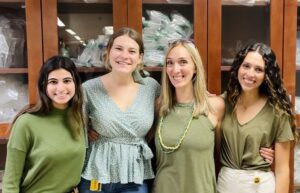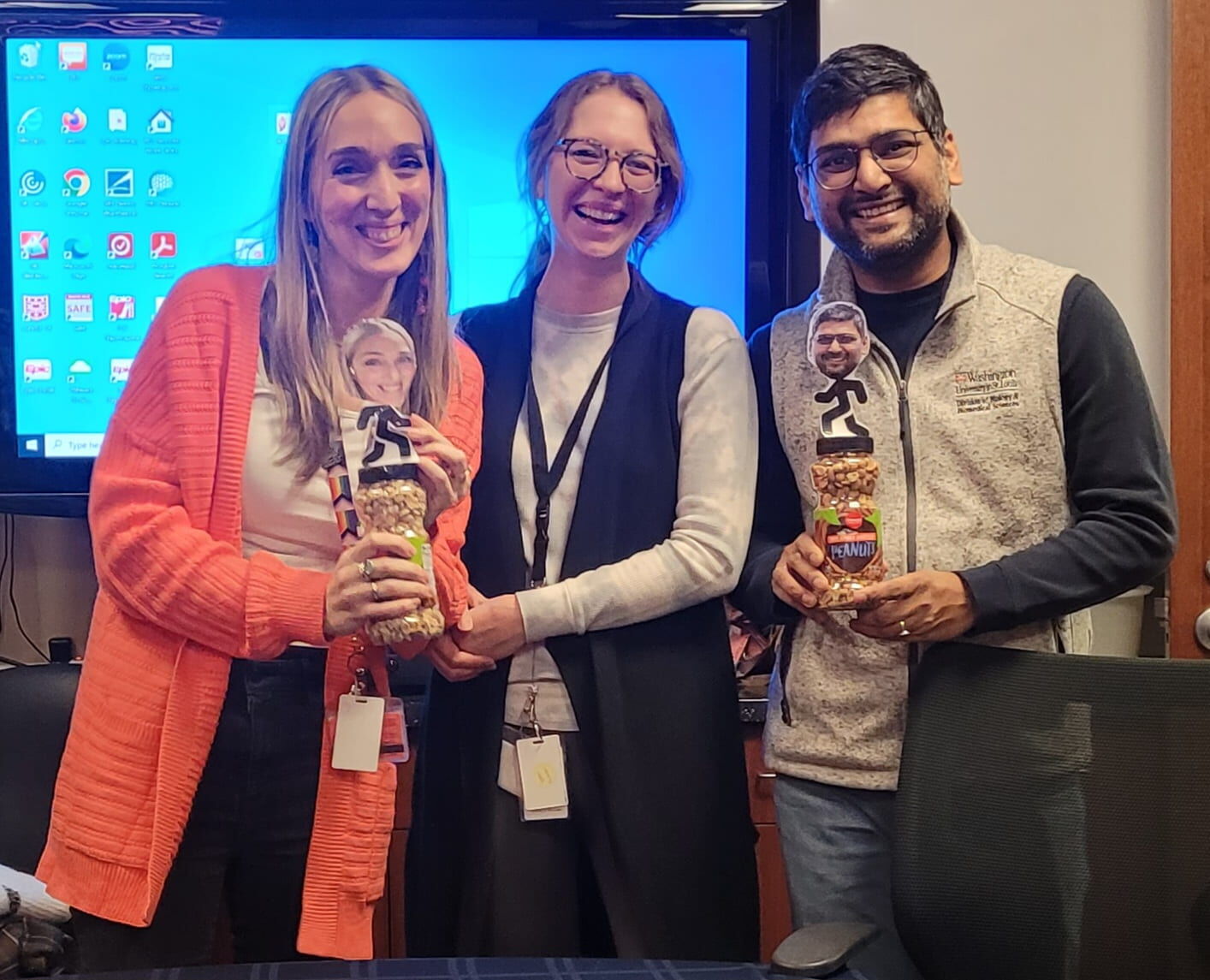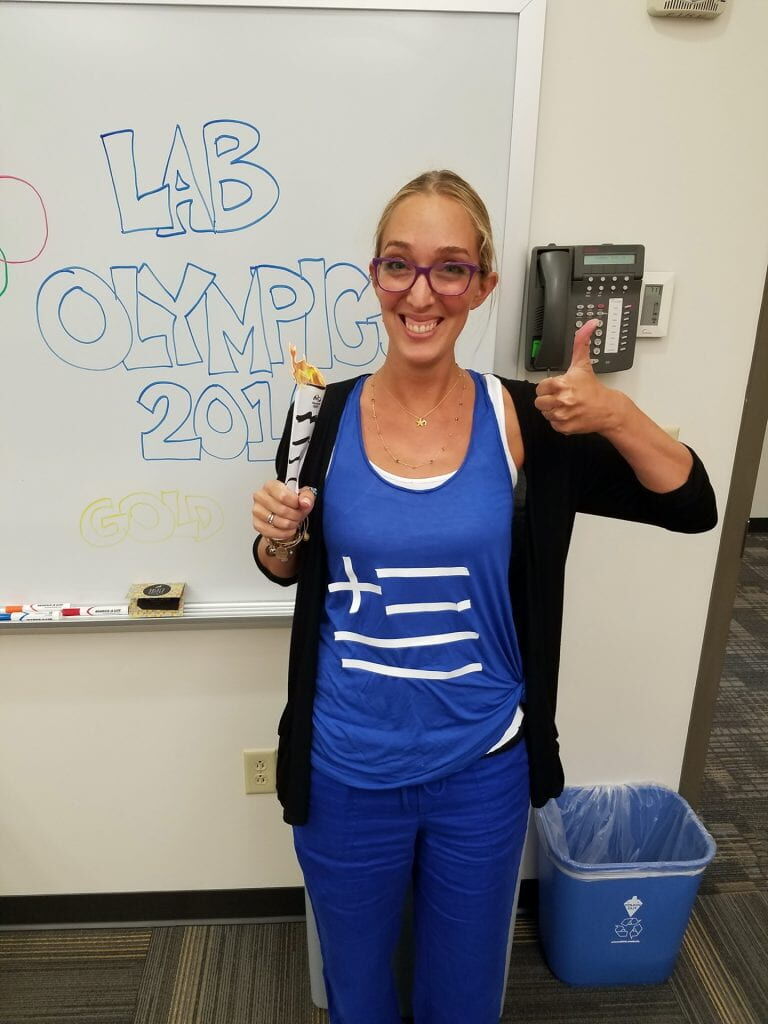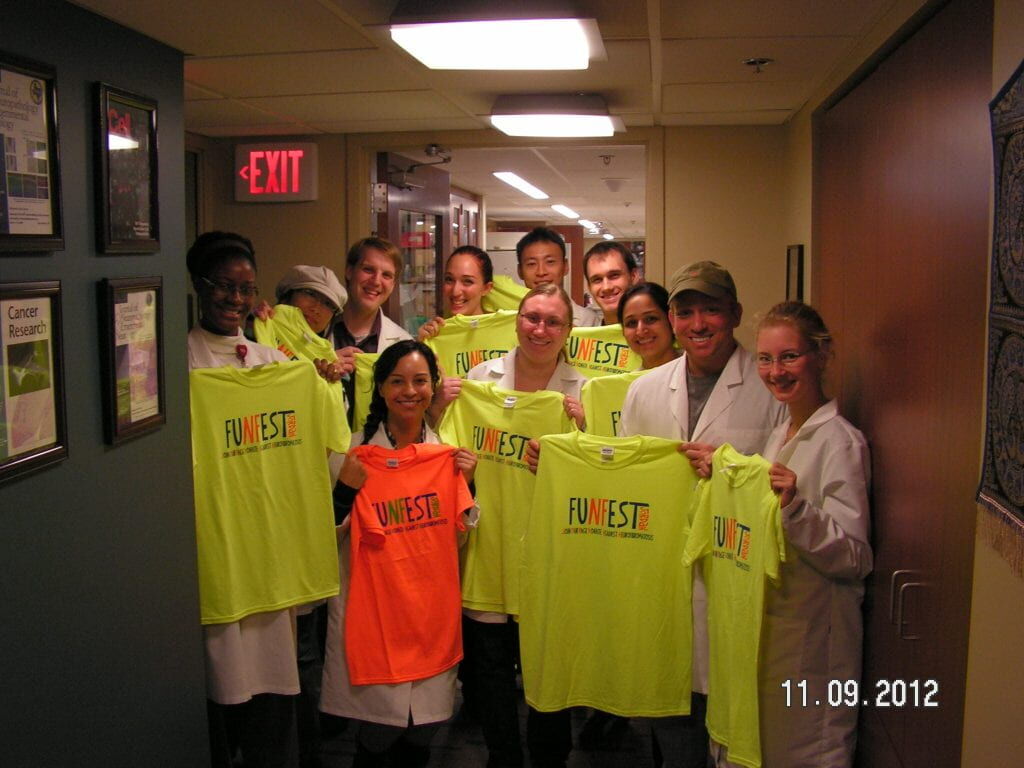Thoughts After a Dozen Years of Brain Research in Neurofibromatosis Type 1 (NF1)
Corina Anastasaki, PhD, Washington University School of Medicine
Discover more articles in the Women in NF series by clicking here.
Over a decade researching Neurofibromatosis Type 1 (NF1). And how fast this time has gone… Looking ahead, there is still so much to understand and conquer, but looking back I am honoured to have been part of all that has been accomplished.
I first learned about NF1 during my PhD years. A geneticist by training, I was working with embryonic zebrafish to understand the impact of different RASopathy mutations on early gastrulation at the University of Edinburgh. The term RASopathies was new, and I was so proud to be contributing to a field that I thought was less studied. And then I stumbled upon NF1, the older, more established sibling of the RASopathies family. After having spent years studying the impact of RAS, BRAF, MEK, and ERK on early development, it was fascinating to me to learn about neurofibromin, a gatekeeper of all of the above and of oh so many more downstream pathways and processes. Given the opportunity to work as a postdoctoral fellow in the NF1 field under the mentorship of David H. Gutmann, MD, PhD at Washington University in St Louis, I jumped at the first chance and booked a one-way transatlantic flight. I fell so in love with the NF1 field, that twelve years later, I am still in the same bench I claimed as a postdoc, but now as a research assistant professor and with a whole new set of questions waiting to be answered.
As a fresh bright-eyed and bushy tailed postdoc, I was attracted by the new to me research field where so much was already known, but just as many mechanisms remained undiscovered. There was a wealth of knowledge to gain from the NF1 giants whose shoulders we stoop upon, but still room for the new generation of researchers to add new directions. The support and close mentorship of Dr. Gutmann was career-changing and solidified my academic path. The most important and impactful encouragement, though, always comes from the NF families themselves. The ability to talk to families affected by NF, answer questions, explain what we currently do, and determine what the important next steps could be, which would really make a palpable difference in clinical care and management, are the most inspiring moments of my career. As a bench scientist, having the frequent opportunity to interact with NF families reminds me of the true meaning of each western blot, electrode recording, or cryosection, and I believe this has made each member of the Gutmann laboratory a better scientist.
 As an outsider to the field of neurology, I was initially focused on the impact of the specific NF1 germline mutation one is born with. I could not fathom how the 2,500 (at the time) and counting identified NF1 mutations could all be working in the same way. I came to realize that in some aspects, they all did: no matter what deleterious NF1 mutation you are born with, it will lead to an NF1 diagnosis, and RAS will be hyper-activated. But was it possible that the very definition of the syndrome could really include a variety of NF flavors, each one dictated- at least in part- by the NF1 germline mutation? Throughout the years, that question has never left my mind, and with every new patient mutation studied, every new human cell line generated, and every newly engineered personalized mouse harboring a patient NF1 mutation, I was reassured that not all of the NF1 mutations were created equal. Using human induced pluripotent stem cells (iPSCs) reprogrammed directly from NF1 patient biospecimens (blood cells, skin fibroblasts, renal epithelial cells) or engineered to harbor NF1 patient-derived NF1 mutations, we were able to generate different cell lineages as well as cerebral organoids to show that different mutations elicited differential neurofibromin expression levels, dopamine tone, neuronal survival, growth, and differentiation, as well as neuronal baseline activity. Through analyses of clinical data, we were additionally able to identify correlations between the NF1 mutation location and optic pathway glioma occurrence or autism spectrum disorder severity. Though we did not understand the reason for this NF1 mutation-dependent variability at first, one of the field’s most important recent contributions came from the crystallization of the neurofibromin protein and the identification that it acts as a dimer. With this realization, a new world of hypotheses had opened. Future studies will undoubtedly uncover new interacting proteins, consider neurofibromin in its three-dimensional open and closed conformations, and not just as a stop sign for RAS. Even as RAS enthusiast myself, I cannot wait to discover and learn about the remaining 80% of neurofibromin’s function.
As an outsider to the field of neurology, I was initially focused on the impact of the specific NF1 germline mutation one is born with. I could not fathom how the 2,500 (at the time) and counting identified NF1 mutations could all be working in the same way. I came to realize that in some aspects, they all did: no matter what deleterious NF1 mutation you are born with, it will lead to an NF1 diagnosis, and RAS will be hyper-activated. But was it possible that the very definition of the syndrome could really include a variety of NF flavors, each one dictated- at least in part- by the NF1 germline mutation? Throughout the years, that question has never left my mind, and with every new patient mutation studied, every new human cell line generated, and every newly engineered personalized mouse harboring a patient NF1 mutation, I was reassured that not all of the NF1 mutations were created equal. Using human induced pluripotent stem cells (iPSCs) reprogrammed directly from NF1 patient biospecimens (blood cells, skin fibroblasts, renal epithelial cells) or engineered to harbor NF1 patient-derived NF1 mutations, we were able to generate different cell lineages as well as cerebral organoids to show that different mutations elicited differential neurofibromin expression levels, dopamine tone, neuronal survival, growth, and differentiation, as well as neuronal baseline activity. Through analyses of clinical data, we were additionally able to identify correlations between the NF1 mutation location and optic pathway glioma occurrence or autism spectrum disorder severity. Though we did not understand the reason for this NF1 mutation-dependent variability at first, one of the field’s most important recent contributions came from the crystallization of the neurofibromin protein and the identification that it acts as a dimer. With this realization, a new world of hypotheses had opened. Future studies will undoubtedly uncover new interacting proteins, consider neurofibromin in its three-dimensional open and closed conformations, and not just as a stop sign for RAS. Even as RAS enthusiast myself, I cannot wait to discover and learn about the remaining 80% of neurofibromin’s function.
One cannot talk about NF1 without thinking about nervous system tumors. The majority of the research community studies the PNS malignancies associated with NF1. However, Dr Gutmann’s laboratory is mostly focused on the brain, the intersection of normal brain development and the growth of brain gliomas, to be precise. Even in this sliver of NF1 research area, over the past decade, I have personally witnessed the evolution of tumor modeling in real-time, including even the very materials used, the readouts of brain and tumor development, and most importantly, the preclinical treatments being tested. 15 years ago, there was a single genetically engineered mouse model of spontaneous Nf1-optic pathway glioma, the most common brain tumor found in children with NF1. To mimic the loss-of-function NF1 germline mutations found in children with NF1, all cells of that mouse strain harbor an engineered neomycin cassette in the middle of the Nf1 gene, thereby inactivating it. Using these mice, we have been able to identify a circuit where non-neoplastic neurons drive glioma initiation or perpetuate tumor growth (cancer neuroscience) by collaborating with immune cells (T cells and microglia; cancer immunology) to sustain tumor cell proliferation. Additionally, through the use of human iPSCs engineered to harbor biallelic NF1 patient-derived NF1 mutations or cells derived directly from NF1 patient glioma operative specimens (pilocytic astrocytoma), we generated the first humanized models of gliomas in mice. These models can be used both for understanding the natural history of these gliomas as well as preclinical platforms for future clinical therapies against these pediatric tumors. In light of the differences conferred by the specific NF1 germline mutation, we also employed CRISPR/Cas9 technology to engineer the first mouse strains harboring NF1 patient-derived Nf1 mutations. These “personalized” mice have differential optic glioma penetrance, which correlates with the Nf1-mutant neuron excitability levels, highlighting the importance of the Nf1 germline mutation. The lessons learned over the past decade have led us to view the ecosystem of these common brain tumors differently. While we may have once only focused on therapies blocking the RAS-mTOR-dependent hyper-proliferation of the glioma cells, we are now targeting the supportive neuron-immune microenvironment. In this respect, modulation of T cell function or neuronal excitability can impede optic glioma growth. Importantly and relevant to clinical translation, we recently demonstrated that administration of the anti-epileptic drug lamotrigine at doses routinely prescribed in children with epilepsy can be used both preventatively and as a chemotherapy to durably block optic glioma growth in two independent Nf1-optic glioma mouse models in vivo. Collectively, evolution and amelioration of these current preclinical models holds exciting possibilities for future research geared towards personalized medicine.
When I attended my first NF meetings, the NF community seemed to me like a big family. A family where everyone is at the very least distantly related to each other, sharing “research grandparents.” Coming from the world of cardio-facio-cutaneous syndrome, I was just a distant cousin. However, the field was and remains very welcoming to young investigators, and I was very encouraged to see a strong representation of women group leaders, which is getting larger every year. Although sometimes findings challenging older assumptions have not been immediately accepted, as knowledge gaps get filled and clinical and scientific questions evolve throughout the community, the research collaborations become stronger with an urge for new connections to be established more easily. Over the past 12 years, I witnessed this large family get even larger, take different directions, tackle old problems with new perspectives, and come together more frequently and faster in order to achieve a better understanding of the disease and care for the families. The growing support from private foundations has been an accelerator in making new research friends and keep conversations evolving. In this world-wide community that grows and supports itself from within, I only wish to continue to be a part of the new bridges being built, and showcase that the lessons learnt from the prism of NF1 can be extrapolated to the study and management of different neurological diseases. Here is to the next decade of (probably) unimaginable right now advances!




